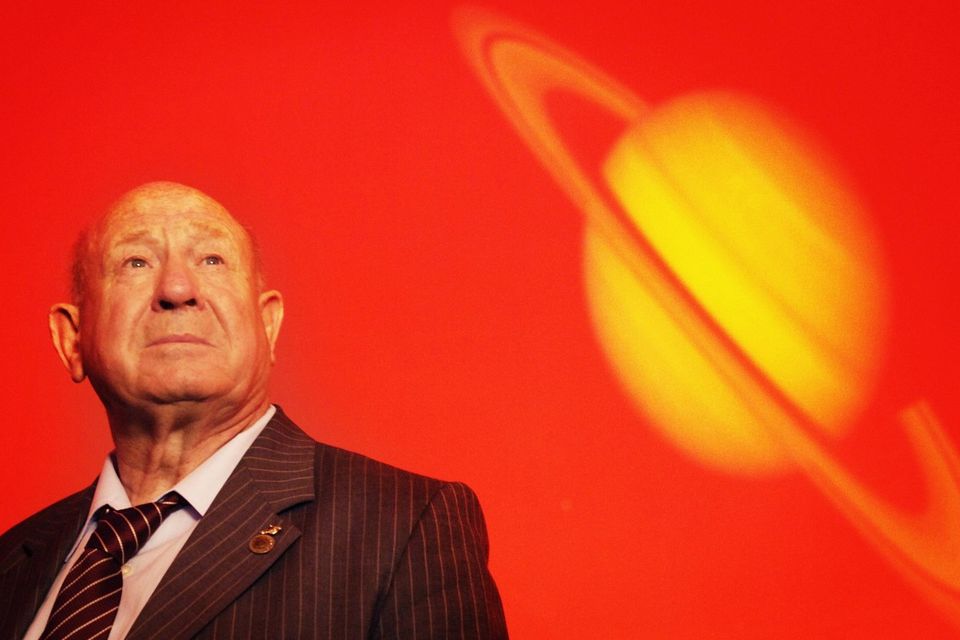Space walk Russian recalls mission
Alexei Leonov was the first man to walk in space in 1965
A Russian cosmonaut who made history as the first man to walk in space has spoken about his brush with death during the mission 50 years ago.
Alexei Leonov was visiting London's Science Museum to announce the launch of its Cosmonauts: Birth Of The Space Age exhibition which opens on September 18.
He was hailed a hero in the Soviet Union after the 12-minute space walk that took place on March 18 1965.
But Leonov and crew-mate Pavel Belyayev very nearly never survived the mission after encountering a series of life-threatening emergencies.
Leonov battled to re-enter the spacecraft after his walk, then had to steer the craft manually towards the Earth after the navigation system failed.
During re-entry the capsule tumbled violently, exposing the two men to ten times the force of gravity.
Finally, their adjusted descent meant they landed hundreds of miles off course in the Ural Mountains and were forced to spend the night in temperatures of minus 25C.
Speaking at the Science Museum, Leonov said: "There were many problems during my first flight.
"Many of those were impossible to test on Earth, for example, how would the space suit react in the vacuum of space? But I had to do it.
"What I want to say is that even if it's only a small thing you want to achieve, you still need to make every possible effort and do it thoroughly."
The Cosmonauts exhibition will feature the most significant collection of Russian spacecraft and artefacts ever put on display in the UK.
It tells the remarkable story of Soviet scientific and technological ingenuity that kick-started the space age.
In 1957 the Soviet Union launched Sputnik, the world's first artificial satellite, and four years later sent the first human into space, Yuri Gagarin.
However, the story of Russian space exploration is much older.
The exhibition will feature rocket pioneer Konstantin Tsiolkovsky's extraordinary 1933 drawings of space flight, depicting space walks, weightlessness and life in orbit almost thirty years before it became a reality.
Among the objects on display will be real cosmonaut-flown spacecraft, including Vostok-6, the capsule that carried first-woman-in-space Valentina Tereshkova in 1963.
Science Museum director Ian Blatchford said: "Cosmonauts is a once-in-a-lifetime exhibition that has taken years of dedication and skill from the Science Museum team to make a reality.
"The Russian space programme is one of the great intellectual, scientific and engineering successes of the 20th century, and I am thrilled that we have been able to bring together such an outstanding collection of Russian space artefacts to celebrate these achievements.
"I want to thank all our partners and funders who have made this exhibition possible."
Join the Belfast Telegraph WhatsApp channel
Stay up to date with some of Northern Ireland's biggest stories

